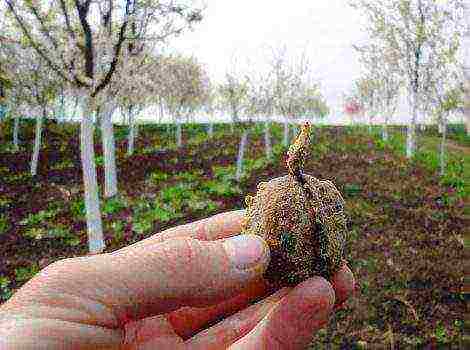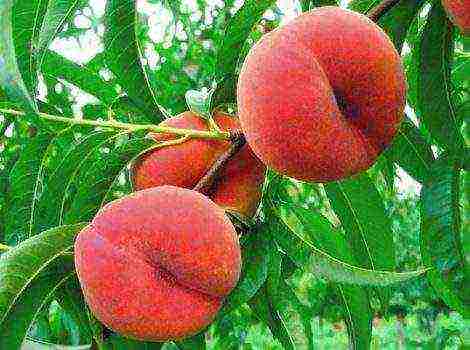Content
Why do pears rot on a tree and what to do about it?
Pear is a fragrant fruit with delicious juicy pulp. Every garden is not complete without a pear tree.
The fruits are consumed fresh, and they also prepare compotes, preserves, confitures and make juice. The advantage of the fruit is that it has a long shelf life.
Every gardener strives to get a good harvest. But it happens that the fruits begin to rot before they have time to ripen on the tree... What are the reasons and how to save the fruits?
Why do pears rot and crack on tree branches?
Everyone noticed rotten pear fruits on the tree, old breeding varieties are mainly susceptible to this phenomenon. Since their ancestry is directly related to the wild pear.
It so happens that there is only a small speck on the skin, and inside all the flesh is brown and very soft... This speaks of the insidiousness of the fungus, which is ready to destroy not only the appearance, but also the taste.
Fruit rot on apple and pear trees:
Sporulation of the fungus appears on the infected fruit, on which conidia are formed. They are carried by wind, rain and insects.
As a result, the remaining fruits are completely infected. Rotting of a pear begins with the tail and by full ripeness the fruit can rot completely.
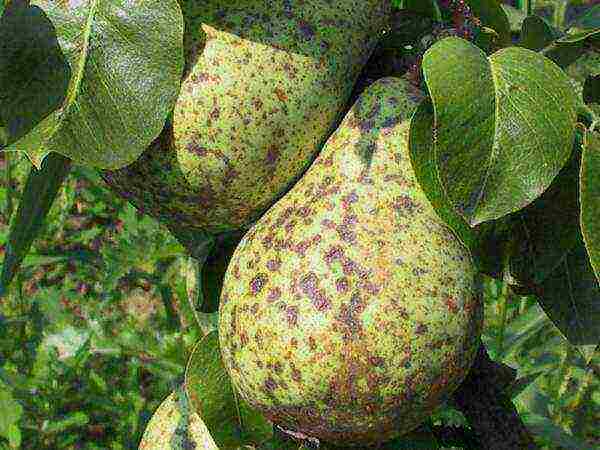
The problem must be solved radically, that is have to remove the old tree.
There is another option save the harvest. Harvest unripe pears. Large and firm green pears are laid out in the shade, and after a few days you can enjoy the aromatic, sweet fruits.
As for the varieties of the new selection, they ripen on the tree. Stored for a long time in a cool room. Fungus becomes the cause of rotting.
The fight against the disease is necessary instantaneous. Harvest infested pears away from healthy people. Fruit infected with moniliosis should not be buried in the ground or stored in a compost pit.
Why? This is due to the fact that fungal spores tolerate cold well, so they can fall on other trees in the spring. And a massive defeat threatens with a lack of harvest.
Moniliosis on fruit trees:
Where does fruit rot come from on trees?
Moniliosis fungus can enter the fetus through lesions in the skin. It is easy to damage the fetus. This can be done by insects, hail, rain, wind.
Infection is also possible due to close contact with a fetus infected with a fungus. From last year, infected fruits may remain hanging, which spread the infection to the new crop.
The crown of a tree can also spread the disease., therefore, all affected leaves, branches, fruits must be removed during sanitary pruning.
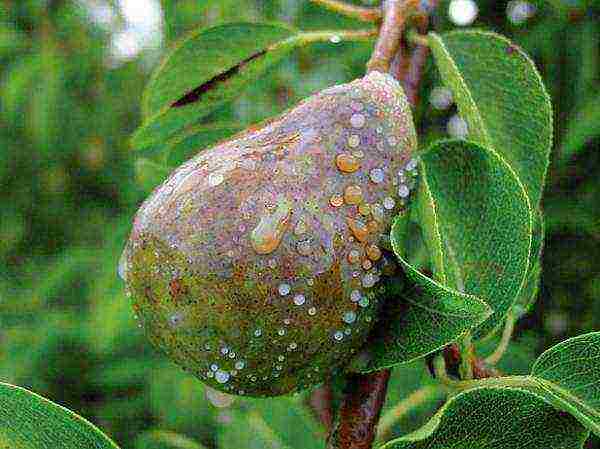
Infected fruits that were not harvested after harvest darken, dry out, and natural mummification occurs. It is advisable to cut these fruits together with the branches.on which they hang.
The fungus can be on the bark of a tree for a long time; over time, this place darkens. therefore diseased branches are pruned with the capture of healthy wood by tens of centimeters. All dried shoots are pruned to a place with healthy wood.
The disease is spread by the spores of the fungus by the wind and by insects that like to feast on the pulp of the sweet fruit. Favorable conditions for the development of moniliosis are warmth and high humidity.
Signs of fruit rot on trees:
- Fungus symptoms can begin to appear as early as spring.
- Infection can also occur at the time of fruit ripening. Since during this period, the skin becomes softer, and fungal spores can penetrate into it. As a result, mold begins to develop, which spreads to the entire fruit.
- At the site of infection, sporulation of the fungus occurs, in appearance it has a round shape with small light blotches in the form of circles. The fungus spreads quickly, affecting not only the skin, but also the pulp.
- Infection can occur not only when carried by insects, but also through close contact of an infected fetus.
- Infected fruits fall off in strong winds, but they can also firmly hold on to the stalk, over time they dry out and remain hanging on the tree. They harden, that is, they mummify and turn black and blue. The fungus is not afraid of the cold, so it can overwinter without problems in fruits, branches and shoots.
- Favorable conditions for the emergence of fungal spores are darkness, low temperature and humid air.
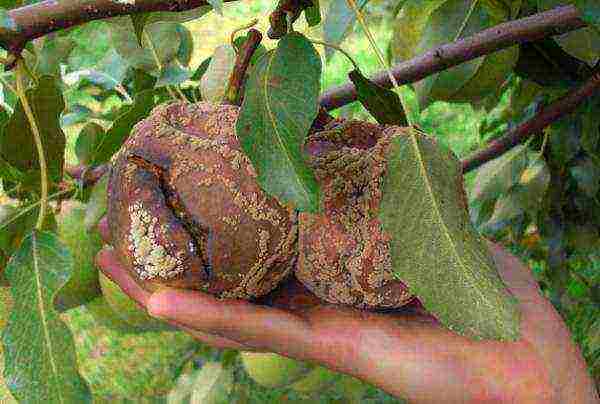
What to do if the fetus is rotting, how to deal with moniliosis?
Caring for future harvests starts in spring... As soon as the snow melts, you need to inspect the tree and the area around it. Collect all last year's foliage and branches, and most importantly, fallen fruits.
If last year's fruits are hanging on the tree, they must be removedb, as they can be infected with fungal spores. He loves a dense crown and dried branches that do not give a crop.
Therefore, in order to prevent moniliosis from multiplying, it is necessary to thin out the crown, cut off dried and weak branches.
You may be interested in the following publications:
- The benefits and harms of pears for the health of men and women.
- Scheme and features of pruning pears in autumn, spring and summer.
- Pear care in autumn and preparation for winter.
If the pear variety is prone to rot formation, be sure to treat the tree with drugs as a prophylaxis:
- First processing must be done during the period of swelling of the kidneys. To do this, use products containing copper. They will help protect the tree from moniliosis. You can use Bordeaux liquid as a chemical.
- Second processing preparations after pear flowering.
- During fruiting carry out the procedure several times.
- Last treatment fungicidal to be carried out after harvest. To do this, use copper sulphate, which needs to be well treated with the crown, the trunk of the pear and the trunk circle.
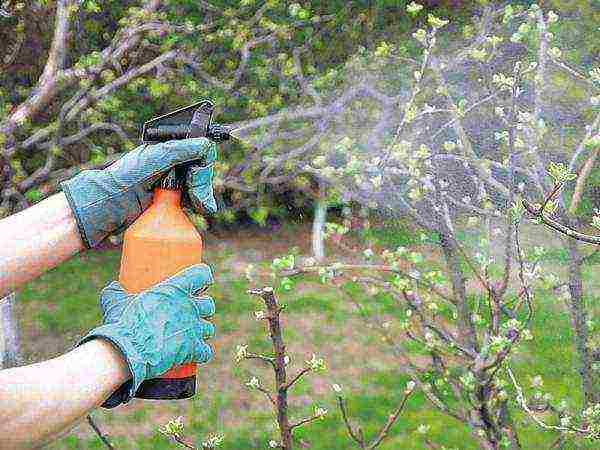
At high air humidity all varieties of pears must be treated with preparations to prevent the spread of the fungus.
It is advisable to use organic fungicides such as bordeaux liquid, copper oxychloride... Processing can be carried out during and after flowering.
Moniliosis affects only the fetus, but spores of the fungus can be stored on foliage, crown, ground. As soon as you notice rotten pears on the tree, immediately remove them from the branches so that the infection does not spread further.
Collect fallen rotten fruits, as they are also a carrier of the fungus.
Prevention of fruit rotting
It is necessary to take care of the tree throughout the year, but special attention should be paid to early spring:
- Pruning dried shoots at the end of winter, before the buds swell... Prune dead and broken branches with an approach to the healthy part. At this time, it is necessary to collect and destroy all last year's fallen leaves remaining on the branches.
- Collect all mummified fruits, they pose a danger to the new crop.
- Thinning of the crown is necessary so that the trees dry out faster after rain. Thanks to this, the chances of getting sick with moniliosis in a tree is reduced several times.
- Thinning of fruits... For a good harvest, leave only large fruits.
- Remove fruits carefully during harvest, don't damage the branches. Inspect each fruit before storing the pear. Infected pears should not remain on the tree or the ground; they must be destroyed.
- Wood treatment with organic fungicides... When the buds begin to swell, it is advisable to treat the tree with Bordeaux liquid. It is necessary to process not only the tree, but also the near-trunk territory. Treatment should be carried out after flowering with fungicidal preparations that will protect the fruits. The procedure is repeated several times, before fruit ripening and after harvesting.
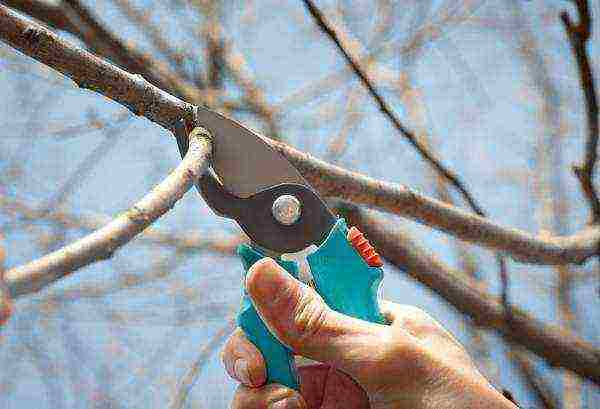
Remember that timely fight against fungus will save the harvest... Moniliosis affects fruits with seeds and seeds, therefore, at the first signs of the disease, it is worth starting an active fight against the problem.
Take care of the tree in time, and it will surely thank you with a rich harvest.
